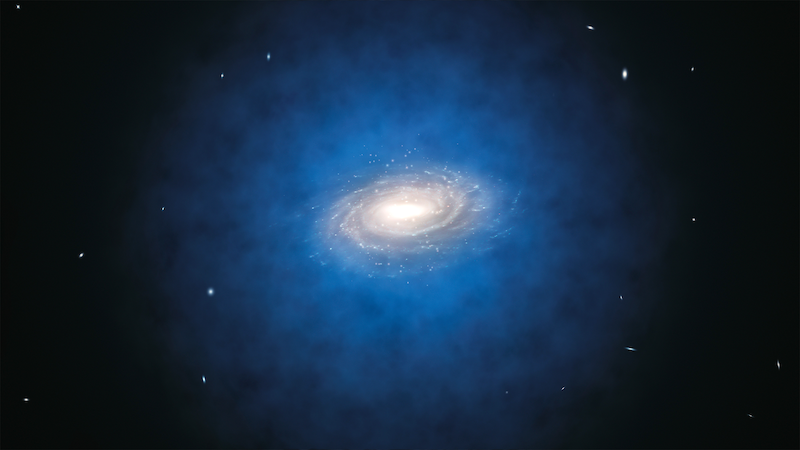
Can isolated black holes account for dark matter?
Rick Pinson
Long Beach, California
Astronomers estimate about 100 million black holes wander the Milky Way. Since black holes emit no light, we rely on indirect methods to infer their presence. The first method is to search for a black hole’s gravitational influence on nearby objects, such as stars. The second is to observe an accretion disk around a feeding black hole. Both methods, however, require one or more stars to reside near the black hole. Therefore, it’s no surprise that scientists know of only about 20 black holes in the Milky Way — all of which are in binary systems, hence why we could find them. That does leave a lot of potentially unaccounted-for black holes in our galaxy.
Surrounding the disk of a galaxy is the stellar halo, a spherical population of stars and clusters. While the Milky Way’s halo extends more than 300,000 light-years, it also sports a halo of dark matter (as do nearly all known galaxies) that may extend even further. Because stars located in the halo are typically older, researchers have indeed wondered if unseen black holes — along with other faint objects like neutron stars, white dwarfs, and planets — in the halo could account for a galaxy’s dark matter. Collectively, these faint, compact objects are known as MAssive Compact Halo Objects, or MACHOs for short.
But based on observations of MACHOs, astronomers think these objects likely only make up 20 percent of the expected amount of dark matter in the Milky Way’s halo. That leaves another 80 percent of dark matter present in our galaxy that cannot be made up of black holes.
Caitlyn Buongiorno
Associate Editor









